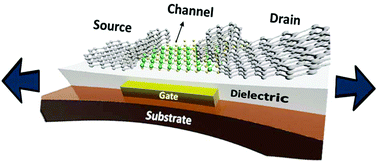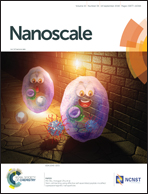Stretchable thin-film transistors with molybdenum disulfide channels and graphene electrodes†
Abstract
Two-dimensional (2D) materials including graphene and transition metal dichalcogenides (TMDCs) have attracted great interest as new electronic materials, given their superior properties such as optical transparency, mechanical flexibility, and stretchability, especially for application in next-generation displays. In particular, the integration of graphene and TMDCs enables the implementation of 2D materials-based thin-film transistors (TFTs) in stretchable displays, given that TFTs are the fundamental element of various modern devices. In the present study, we demonstrate chemical-vapor-deposited molybdenum disulfide and graphene-based TFTs on a polymer substrate and investigate the electrical characteristics of TFTs under mechanical deformation to determine the stretchability of our devices. Furthermore, the mechanisms leading to TFT performance degradation are investigated, as they relate to the change in the contact resistance that is closely associated with the relative deformation of 2D materials under mechanical stress. Therefore, the synergetic integration of 2D materials with versatile electrical properties provides an important strategy for creating 2D materials-based stretchable TFTs, thus extending the excellent potential of 2D materials as innovative materials for stretchable active-matrix displays.



 Please wait while we load your content...
Please wait while we load your content...